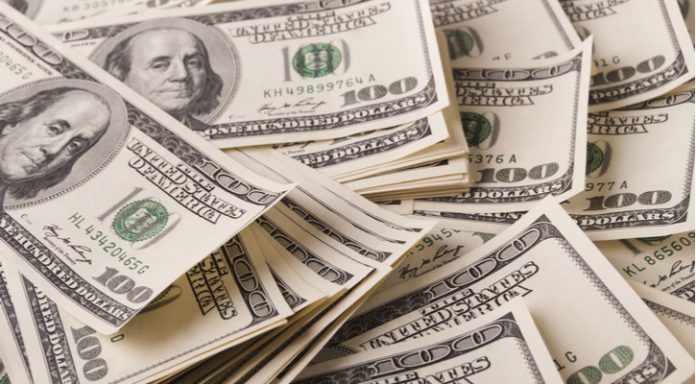The pound US dollar exchange rate traded a range of 80 points on Tuesday, before ending the day at US$1.3121, less than 0.1% away from where it started the session. Overnight the dollar strengthened slightly ahead of the Fed rate decision.
| What do these figures mean? |
|---|
|
When measuring the value of a pair of currencies, one set equals 1 unit and the other shows the current equivalent. As the market moves, the amount will vary from minute to minute. For example, it could be written: 1 GBP = 1.28934 USD Here, £1 is equivalent to approximately $1.29. This specifically measures the pound’s worth against the dollar. If the US dollar amount increases in this pairing, it’s positive for the pound. Or, if you were looking at it the other way around: 1 USD = 0.77786 GBP In this example, $1 is equivalent to approximately £0.78. This measures the US dollar’s worth versus the British pound. If the sterling number gets larger, it’s good news for the dollar. |
The UK economic calendar was sparse once again on Tuesday, leaving investors to focus on the odd Brexit headline. UK Foreign Secretary Jeremy Hunt appealed to leaders of France and Germany for a sensible Brexit deal, which right now looks unlikely. Mr Hunt once again warned of a no deal Brexit, by accident, as the clock keeps ticking towards the October deadline, yet there is no Brexit deal in sight. Concerns of a hard, no deal Brexit weighed on the pound.
| Why is a “soft” Brexit better for sterling than a “hard” Brexit? |
|---|
| A soft Brexit implies anything less than UK’s complete withdrawal from the EU. For example, it could mean the UK retains some form of membership to the European Union single market in exchange for some free movement of people, i.e. immigration. This is considered more positive than a “hard” Brexit, which is a full severance from the EU. The reason “soft” is considered more pound-friendly is because the economic impact would be lower. If there is less negative impact on the economy, foreign investors will continue to invest in the UK. As investment requires local currency, this increased demand for the pound then boosts its value. |
As from today the UK economic calendar starts to fill up with, purchasing managers index surveys (pmi’s) and the Bank of England interest rate decision coming up across the rest of the week.
Today investors will be looking towards the UK manufacturing pmi. Analysts predict that manufacturing activity in the UK will ease in July to 54.2, down from 54.4 in July, whereby any figure of 50 represents expansion. The survey is expected to show that activity in the sector remains subdued. Whilst strong global growth and trade boosted manufacturing last year, that hasn’t been the case this year. Concerns over trade wars and the global economy losing momentum has weakened UK manufacturing activity.
| Why does poor economic data drag on a country’s currency? |
|---|
| Slowing economic indicators point to a slowing economy. Weak economies have weaker currencies because institutions look to reduce investments in countries where growth prospects are low and then transfer money to countries with higher growth prospects. These institutions sell out of their investment and the local currency, thus increasing supply of the currency and pushing down the money’s worth. So, when a country or region has poor economic news, the value of the currency tends to fall. |
US Inflation Dips But Spending Remained Strong
US inflation data kept demand for the dollar weak in the previous session. Inflation, as measured by the personal consumption index (PCE) unexpectedly fell to 1.9% in June. This was below the 2% that analysts had pencilled in and below the 2% target rate set by the Federal Reserve. Although the inflation reading was slightly weaker than analysts had forecast this is unlikely to cause too many problems among investors. Whilst inflation eased slightly, personal consumption remained robust, indicating that consumers were still spending.
The Federal Reserve started the two-day meeting on Tuesday, to give their interest rate announcement later tomorrow. Analysts are not expecting the Fed to hike rates, given that they did so last month.
This publication is provided for general information purposes only and is not intended to cover every aspect of the topics with which it deals. It is not intended to amount to advice on which you should rely. You must obtain professional or specialist advice before taking, or refraining from, any action on the basis of the content in this publication. The information in this publication does not constitute legal, tax or other professional advice from TransferWise Inc., Currency Live or its affiliates. Prior results do not guarantee a similar outcome. We make no representations, warranties or guarantees, whether express or implied, that the content in the publication is accurate, complete or up to date. Consult our risk warning page for more details.
This article was initially published on TransferWise.com from the same author. The content at Currency Live is the sole opinion of the authors and in no way reflects the views of TransferWise Inc.





